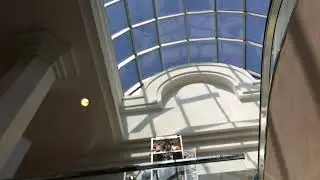Inelastic collision then maximum compression of a spring: find the initial velocity of the dart.
00:00 In this ballistic spring and block problem, a dart is shot into a block attached to a spring, so we have an inelastic collision then maximum compression of a spring. After the collision, the combined masses keep moving until the maximum compression of the spring is reached. We are given the maximum compression of the spring, and our main goal is to find the initial velocity of the dart.
00:25 Compute the velocity after impact: we begin working backwards from the maximum compression of the spring. We want to find the velocity of the combined masses immediately after impact, and this is done using energy conservation because the compression of the spring is an energy-conserving process. We are given the masses, given the spring constant and given the maximum compression, and we set the initial energy equal to the final energy. The initial energy is all kinetic and the final energy is all spring potential energy. This leaves the initial velocity of the combined masses as the only unknown, so we can solve for initial velocity *after* the impact has occured.
02:06 Compute the initial velocity of the dart: the impact with the block is an inelastic collision in which some energy is lost. However, momentum is a conserved quantity in the impact. So, we set the initial momentum of the moving dart equal to the final momentum of the combined masses immediately after the impact. We quickly solve for the initial velocity of the projectile.
04:06 Compute the energy lost in the collision: finally, we are asked for the energy lost in the inelastic collision. We simply compute the initial kinetic energy of the dart and the kinetic energy of the combined masses after the impact and take the difference to find the kinetic energy lost in the collision.







